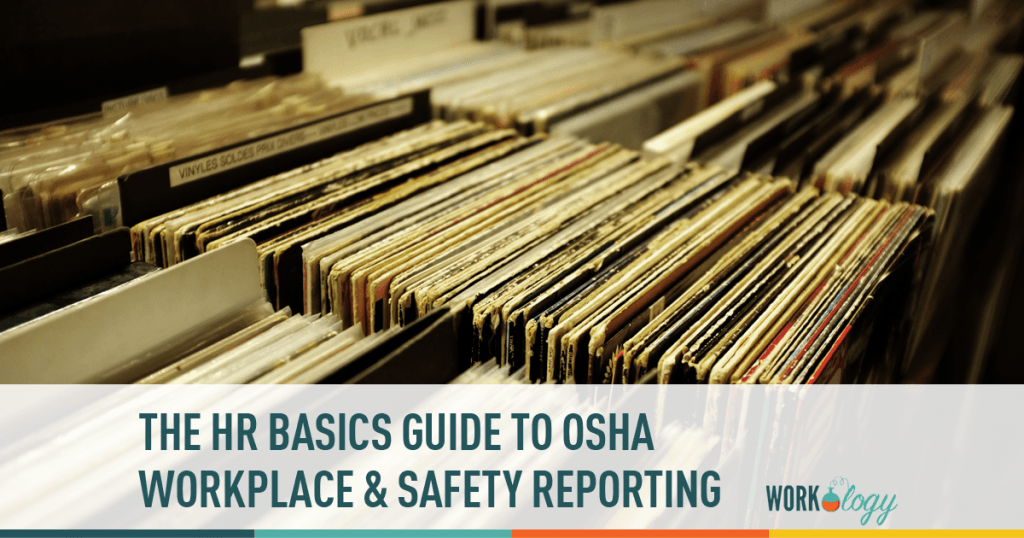Blogging4Jobs is bringing you a special two-week series on basics in the workplace. Whether you’re a seasoned pro or new practitioner, learn about the basics of your job. It’s information we all need to know.
In my first HR practitioner job in 2001, I had the lovely experience of auditing our OSHA log forms. You know those wonderful documents you keep at a facility to record an accident or injury by an employee. OSHA requires that companies keep 7 years of records on file with this information with specific dates that employers are required to post in employee only areas to be accessible for the employee.
The Mystery of the Missing OSHA 300A Forms
My audit revealed that there were no OSHA forms anywhere at my facility. No OSHA 300 or 300A forms anywhere filed away or stored in the rooms upon rooms filled with filing cabinets I spent organizing, searching and sorting my first two weeks at the facility. For the last seven years, no one had documented on any type of OSHA form our workplace incidents so I started with the less than desirable task of manually work through 7 years of employee incident document to bring us in compliance and avoid a hefty fine as required by the OSHA governing body.
I was 4 months into my role as a retail HR practitioner and aside from a run in with an immigration issue at our store and several employee terminations I sat in, I didn’t have a clue.
I started first by attending a class at our local community college that was offered at a minimal fee to better understand how to complete forms, ask questions and get a sense of what OSHA inspectors wanted to see. It was a four-hour class filled with information that was important but of the snooze variety.
I tried to take detail notes, but it is hard to really absorb exactly what needs absorbing without really diving into the 7-year black hole of OSHA documentation I was facing. So for those of you who are like me, here are the HR basics to get you started on OSHA documentation and auditing straight away.
What is the Occupational Safety and Health Administration?
First off, OSHA stands for Occupational Safety and Health Administration or OSHA for short. It was established in 1971 with the goal of keeping workers safe and healthy on the job. It is estimated in 1970 that 14,000 employees were killed on the job. In 2009, through the efforts of the Occupational Safety and Health Administration, that number has fallen to 4,340 fatalities.
- Forms. There are three types of forms: the 300, 301 and 300A. OSHA offers these forms for free and are available to complete online or print and fill out yourself. Click here to access OSHA’s forms page.
- Recordkeeping. Companies are required to report any incident orally that results in the death of an employee or any employee form a work-related incident or in-patient hospitalization of three or more employees as a result of a work-related incident within eight hours.
- OSHA 300A Employee Posting. From February 1 to April 30th of every year, employers are required to post in an employee area, Form 300A, which is the Summary of Work-Related Injuries and Illnesses.
- Who to Contact. Each state has its own state OSHA office or region you can speak with for a specific question. Click here to access the contact list.
After obtaining my OSHA training and just diving into the black hole of record keeping, I was able to go to work properly complete the required forms and determining through my worker’s compensation incident report what incident was considered an OSHA one and the amount of time lost for each incident so I could accurately report on the form which was not easy.
Thought my efforts, however, I obtained some much-needed information after I realized one of my employees reported 8 separate worker’s compensation incidents in 3 years. Through my research I was able to alert my workers compensation team, and we were able to stop fraud that was occurring at that facility. The employee with the fraud in question at one point was also responsible for the OSHA record keeping and was likely the reason it was lost so that he could avoid being found out for his activities.









